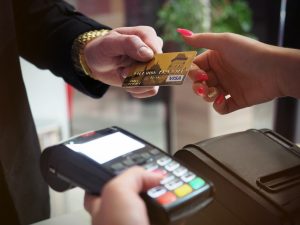Types of Buying Intent and its Psychological Behavior
Types of Buying Intent and its Psychological Behavior
Buying decision behavior is the process of choosing a product or service among various alternatives based on different criteria. Buying decision behavior is influenced by many factors, such as personal preferences, social influences, psychological factors, and situational factors. Understanding how your customers make buying decisions can help you create more effective marketing campaigns and increase your sales.

There are four main types of buying decision behavior: complex, dissonance-reducing, habitual, and variety-seeking. Let me explain each one with some examples.
- Complex buying behavior:
This type of behavior occurs when consumers have a high level of involvement in the purchase and perceive significant differences among the available brands. Consumers who engage in complex buying behavior usually spend a lot of time and effort searching for information, evaluating alternatives, and making comparisons before making a decision. They also tend to experience a high level of cognitive dissonance after the purchase, which is the feeling of doubt or regret about their choice.
An example of a product that involves complex buying behavior is a car. Consumers who buy a car have to consider many factors, such as price, quality, performance, features, design, safety, etc. They also have to compare different brands and models based on these criteria. Buying a car is a costly, risky, infrequent, and highly self-expressive purchase that affects the consumer’s life significantly.
- Dissonance reducing buying behavior:
This type of behavior occurs when consumers have a high level of involvement in the purchase but perceive little or no differences among the available brands. Consumers who engage in dissonance-reducing buying behavior usually make a quick decision based on the most convenient or familiar option. They also tend to experience a high level of cognitive dissonance after the purchase, which is the feeling of dissatisfaction or uncertainty about their choice. They may try to reduce their dissonance by seeking more information or justification for their purchase.
An example of a product that involves dissonance-reducing buying behavior is a carpet. Consumers who buy a carpet have to consider many factors, such as color, texture, size, quality, durability, etc. However, they may not find much difference among the various brands and options available. Buying a carpet is a costly, risky, infrequent, and moderately self-expressive purchase that affects the consumer’s home environment.
- Habitual buying behavior:
This type of behavior occurs when consumers have a low level of involvement in the purchase and perceive little or no differences among the available brands. Consumers who engage in habitual buying behavior usually make a routine or habitual decision based on habit, loyalty, convenience, or impulse. They do not seek much information or evaluation before making a decision. They also tend to experience little or no cognitive dissonance after the purchase.
An example of a product that involves habitual buying behavior is salt. Consumers who buy salt do not have to consider many factors, such as price, quality, taste, etc. They also do not find much difference among the various brands and options available. Buying salt is an inexpensive, low-risk, frequent, and low-self-expressive purchase that does not affect the consumer’s life significantly.
- Variety seeking buying behavior:
This type of behavior occurs when consumers have a low level of involvement in the purchase but perceive significant differences among the available brands. Consumers who engage in variety-seeking buying behavior usually make a random or exploratory decision based on curiosity, novelty, variety, or boredom. They seek information and evaluation only for fun or stimulation before making a decision. They also tend to experience little or no cognitive dissonance after the purchase.
An example of a product that involves variety-seeking buying behavior is chocolate. Consumers who buy chocolate have to consider some factors, such as flavor, quality, texture, etc. They also find some differences among the various brands and options available. Buying chocolate is an inexpensive, low-risk, frequent, and moderately self-expressive purchase that does not affect the consumer’s life significantly.
Buying decision process
The buying decision process is a complex and dynamic process that involves cognitive, emotional, and behavioral aspects. It is not a linear or rational process, but rather a circular and iterative one, where consumers may go back and forth between different stages until they reach a satisfactory outcome. The buying decision process can be divided into five main stages: need recognition, information search, evaluation of alternatives, purchase decision, and post-purchase evaluation. Let’s take a closer look at each stage and how marketers can optimize them.
Need Recognition
The first stage of the buying decision process is need recognition, which is when consumers realize that they have a problem or a gap between their current state and their desired state. This can be triggered by internal stimuli, such as hunger, thirst, or boredom, or external stimuli, such as advertising, social media, or word-of-mouth. The need recognition stage is crucial for marketers because it creates an opportunity to attract consumers’ attention and interest in their products or services.
To influence consumers at this stage, marketers need to:
- Conduct market research to identify the needs and wants of their target market
- Create awareness and demand for their products or services by highlighting the benefits and value proposition
- Use effective communication channels and strategies to reach consumers at the right time and place
- Create a sense of urgency or scarcity to motivate consumers to act quickly
Information Search
The second stage of the buying decision process is information search, which is when consumers seek more information about the possible solutions to their problem or need. Consumers may use different sources of information, such as personal experience, word-of-mouth, online reviews, advertisements, etc. The amount and type of information that consumers seek depend on several factors, such as the level of involvement, perceived risk, prior knowledge, and personal characteristics. The information search stage is important for marketers because it helps consumers narrow down their choices and form preferences.
To influence consumers at this stage, marketers need to:
- Provide relevant and accurate information about their products or services on various platforms and media
- Position their products or services favorably by emphasizing their competitive advantage and unique selling proposition
- Build trust and credibility with consumers by offering guarantees, warranties, testimonials, etc.
- Use social proof and influencer marketing to leverage the power of word-of-mouth and referrals
Evaluation of Alternatives
The third stage of the buying decision process is the evaluation of alternatives, which is when consumers compare and contrast the different options that they have identified in the previous stage. Consumers may use different criteria, such as price, quality, features, benefits, etc., to evaluate the alternatives. They may also use different decision rules, such as compensatory, non-compensatory, or heuristic, to make trade-offs and judgments. The evaluation of the alternatives stage is critical for marketers because it determines which option consumers will choose.
To influence consumers at this stage, marketers need to:
- Highlight the distinctive attributes and benefits of their products or services that match consumers’ needs and wants
- Use persuasive techniques such as framing, anchoring, and priming to influence consumers’ perceptions and preferences
- Use emotional appeals such as fear, humor, or nostalgia to elicit positive or negative feelings toward their products or services
- Use cognitive biases such as confirmation bias, availability heuristic, or loss aversion to affect consumers’ decision-making
Purchase Decision
The fourth stage of the buying decision process is the purchase decision, which is when consumers make the final choice of which product or service to buy. This stage may involve other factors such as availability, convenience, payment methods, delivery options, etc., that may affect consumers’ willingness and ability to buy. The purchase decision stage is essential for marketers because it converts potential customers into actual customers.
To influence consumers at this stage, marketers need to:
- Make the purchase process easy and convenient for consumers by offering multiple channels, options, and incentives
- Reduce the perceived risk and uncertainty for consumers by providing guarantees, warranties, return policies, etc.
- Increase the perceived value and satisfaction for consumers by offering discounts, rewards, bonuses, etc.
- Create a sense of urgency or scarcity to encourage consumers to buy now rather than later
Post-Purchase Evaluation
The fifth and final stage of the buying decision process is post-purchase evaluation, which is when consumers assess the outcome of their purchase decision after using or consuming the product or service. This stage may involve cognitive dissonance, which is the feeling of doubt or regret that consumers may experience after making a purchase decision. This stage may also involve customer satisfaction, loyalty, and advocacy, which are the positive outcomes that marketers want to achieve. The post-purchase evaluation stage is vital for marketers because it affects consumers’ future behavior and relationship with the brand.
To influence consumers at this stage, marketers need to:
- Provide after-sales service and support to consumers by offering customer service, follow-up communication, feedback mechanisms, etc.
- Reduce cognitive dissonance and increase customer satisfaction by reinforcing the positive aspects of their products or services and resolving any issues or complaints
- Build customer loyalty and retention by offering loyalty programs, repeat purchase incentives, cross-selling and up-selling opportunities, etc.
- Encourage customer advocacy and word-of-mouth by asking for reviews, testimonials, referrals, etc.
Conclusion
The buying decision process is a key concept for marketers to understand and apply in their marketing strategy. By knowing how consumers make buying decisions, marketers can tailor their marketing mix (product, price, place, and promotion) accordingly to meet their needs and wants. They can also anticipate their behavior and influence their choices in a positive way.




